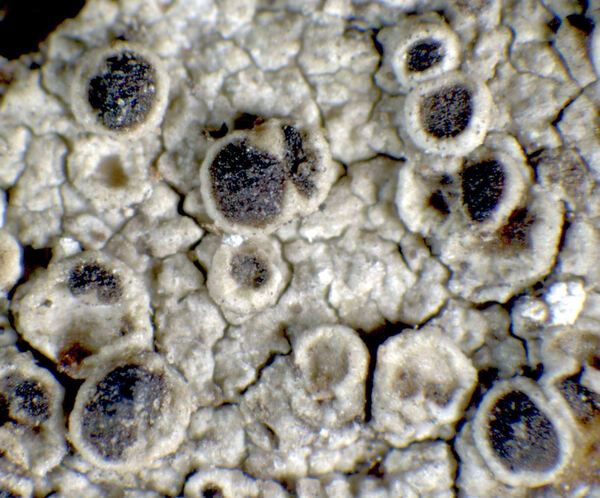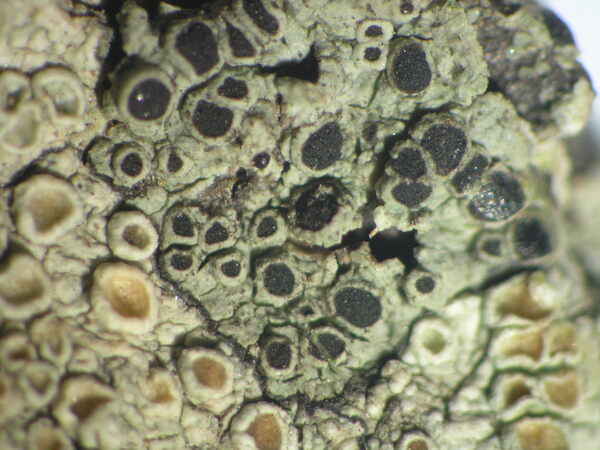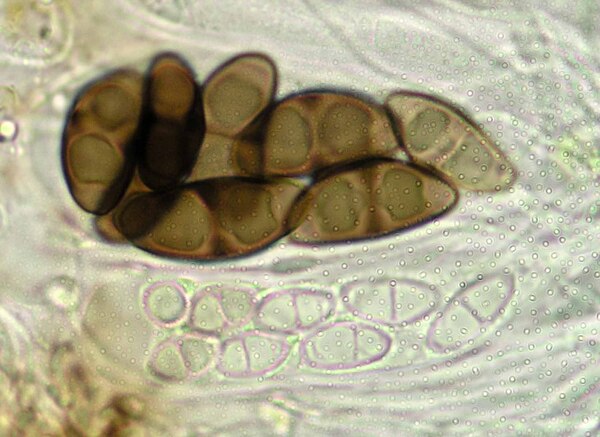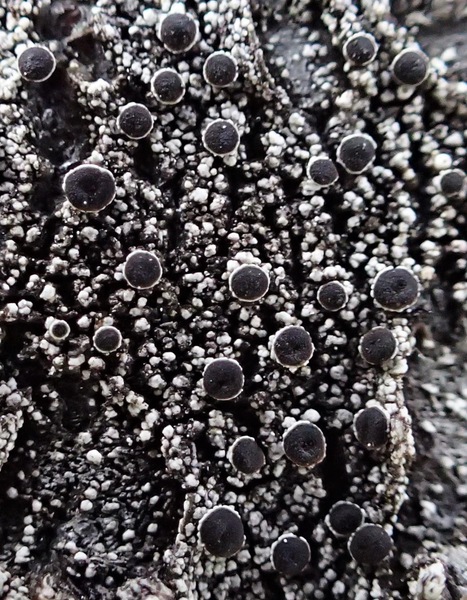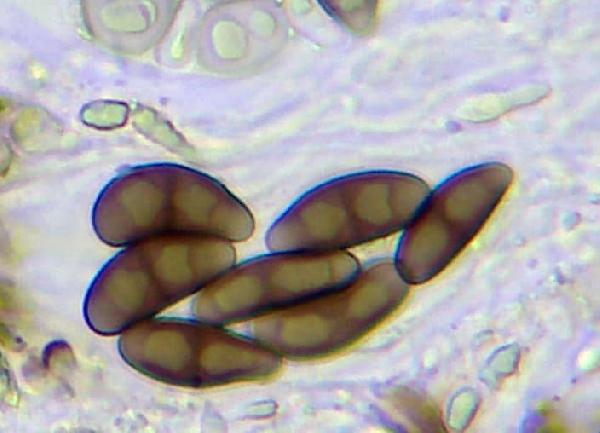Rinodina capensis Hampe
in A. Massal., Mem. Ist. Ven. Sc., Lett. Arti, 10: 87, 1861.
Synonyms: Rinodina corticicola Dalla Torre & Sarnth.; Rinodina corticola (Arnold) Arnold; Rinodina teichophila var. corticola Arnold
Distribution: N - Frl (Giralt & Mayrhofer 1994), Ven (Nascimbene & al. 2021), TAA (Giralt & Mayrhofer 1994, Nascimbene & al. 2007b, 2009, 2010, 2022, Nascimbene 2014, Nascimbene & Marini 2015, Nimis & al. 2015, Trindade & al. 2021), Lomb (Rabenhorst Lich. Eur. 889: Giralt & Mayrhofer 1994), Piem (Piervittori 2003), Emil (Nimis & al. 1996, Fariselli & al. 2020). C - Tosc (Giralt & Mayrhofer 1994, Benesperi & al. 2007), Abr (Di Santo & Ravera 2012, Corona & al. 2016), Sar (Giralt & Mayrhofer 1994, Zedda & Sipman 2001, Zedda 2002). S - Pugl (Nimis & Tretiach 1999), Bas (Nimis & Tretiach 1999), Cal (Giralt & Mayrhofer 1994, Puntillo 1996, Incerti & Nimis 2006, Puntillo 2011), Si (Caniglia & Grillo 2003, Grillo & Caniglia 2004, 2006, Liistro & Cataldo 2011).
Description: Thallus crustose, episubstratic, thin, continuous to areolate, the areoles (0.2-)0.5-1 mm wide, whitish grey to greenish grey, dull, without a distinct prothallus. Apothecia lecanorine, sessile, 0.3-0.8 mm across, with a black, flat to convex disc and a thick, entire, usually persistent thalline margin. Thalline exciple 50-80 µm thick laterally, corticate, the cortex 25-35 µm thick laterally, expanding to 50(-80) µm in lower part, I+ pale blue; proper exciple colourless to lightly pigmented, 5-15 µm thick laterally; epithecium dark reddish brown, K-, N-, P-; hymenium colourless, 80-100(-120) µm high; paraphyses more or less coherent, 2-2.5 µm thick at mid-level, the apical cells up to 3.5(-4.5) µm wide; hypothecium colourless. Asci 8-spored, clavate, the K/I+ blue tholus penetrated by a faintly amyloid apical cushion with parallel or diverging flanks, the wall K/I-, surrounded by a K/I+ blue outer layer, Lecanora-type. Ascospores 1-septate, pigmented, ellipsoid, (16-)19-23(-27) x (8.5-)10-11(-12.5) µm, Physcia-type, the wall minutely warted, the torus developed, with spore ontogeny of type A (apical wall thickening after septum formation). Pycnidia infrequent, immersed. Conidia bacilliform, 4-5 µm long. Photobiont chlorococcoid. Spot tests: cortex K+ pale yellow, C-, KC-, P- or P+ faintly yellow. Chemistry: cortex with atranorin, medulla with zeorin (traces).Note: a cool-temperate to boreal-montane pioneer species, mostly found on smooth bark, but also on lignum, with optimum in the subalpine and montane vegetation belts; the species is also known from the Canary Islands.
Growth form: Crustose
Substrata: bark and lignum
Photobiont: green algae other than Trentepohlia
Reproductive strategy: mainly sexual
Pioneer species
Commonnes-rarity: (info)
Alpine belt: absent
Subalpine belt: rather common
Oromediterranean belt: absent
Montane belt: rather common
Submediterranean belt: extremely rare
Padanian area: absent
Humid submediterranean belt: absent
Humid mediterranean belt: absent
Dry mediterranean belt: absent
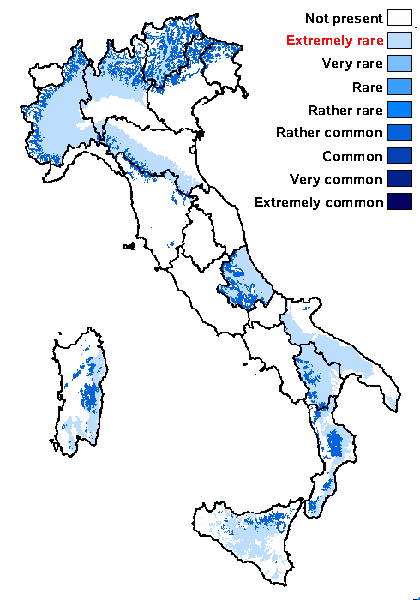
Predictive model
Herbarium samples
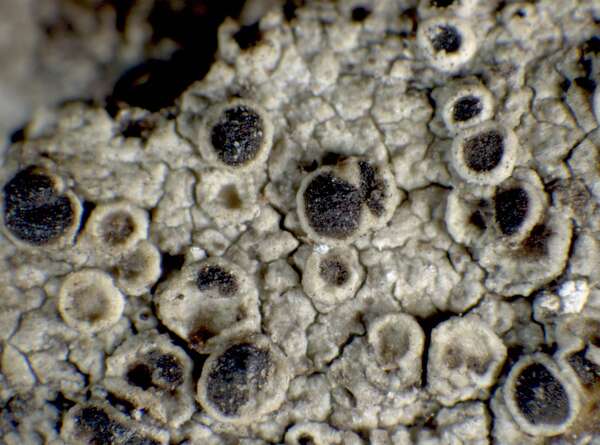

P.L. Nimis; Owner: Department of Life Sciences, University of Trieste
Herbarium: TSB (17379)
2001/11/29
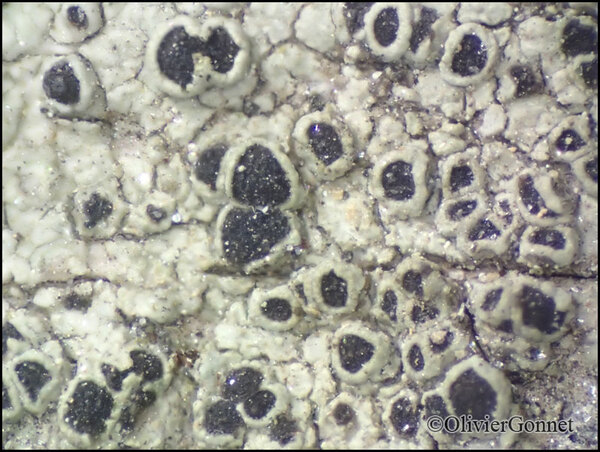
Courtesy Danièle et Olivier Gonnet - Source: https://www.afl-lichenologie.fr/Photos_AFL/Photos_AFL_R/Textes_R/Rinodina_capensis.htm
France, 10/10/2014 - Site de Mucchiatana, alt. 5 m - Corse

Courtesy Danièle et Olivier Gonnet - Source: https://www.afl-lichenologie.fr/Photos_AFL/Photos_AFL_R/Textes_R/Rinodina_capensis.htm
France, 10/10/2014 - Site de Mucchiatana, alt. 5 m - Corse
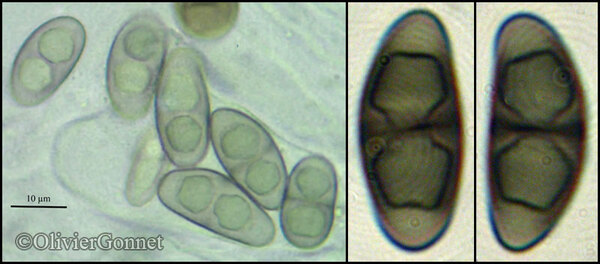
Courtesy Danièle et Olivier Gonnet - Source: https://www.afl-lichenologie.fr/Photos_AFL/Photos_AFL_R/Textes_R/Rinodina_capensis.htm
France, 10/10/2014 - Site de Mucchiatana, alt. 5 m - Corse
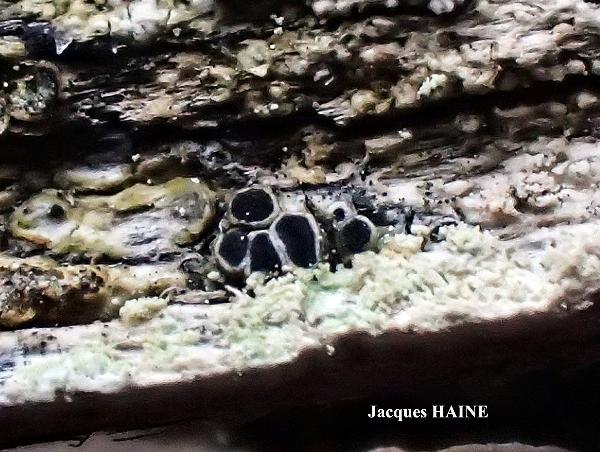
Jacques Haine - Source: http://www.lichensmaritimes.org/index.php?task=fiche&lichen=1453&lang=en
France, Corse, Corbara
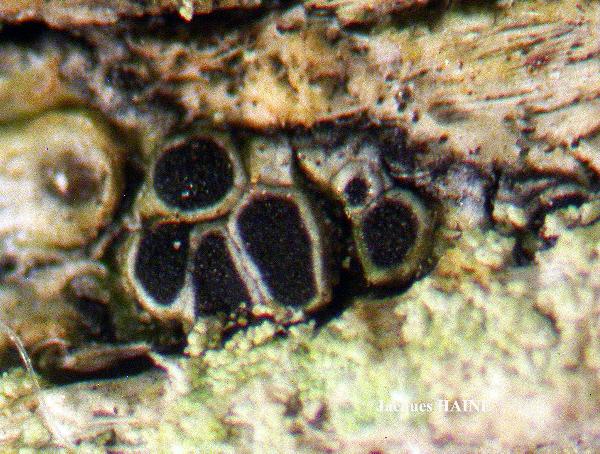
Jacques Haine - Source: http://www.lichensmaritimes.org/index.php?task=fiche&lichen=1453&lang=en
France, Corse, Corbara
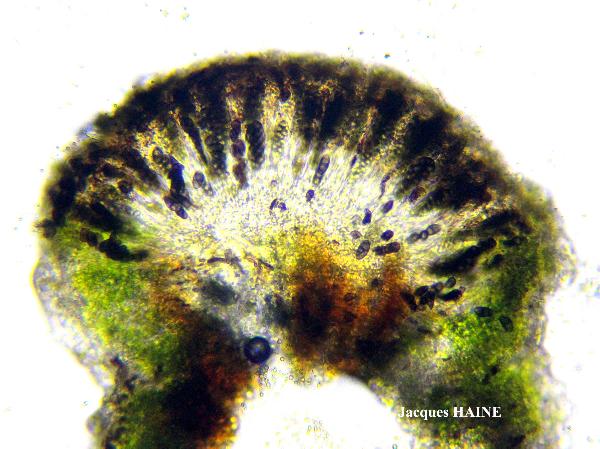
Jacques Haine - Source: http://www.lichensmaritimes.org/index.php?task=fiche&lichen=1453&lang=en
France, Corse, Corbara
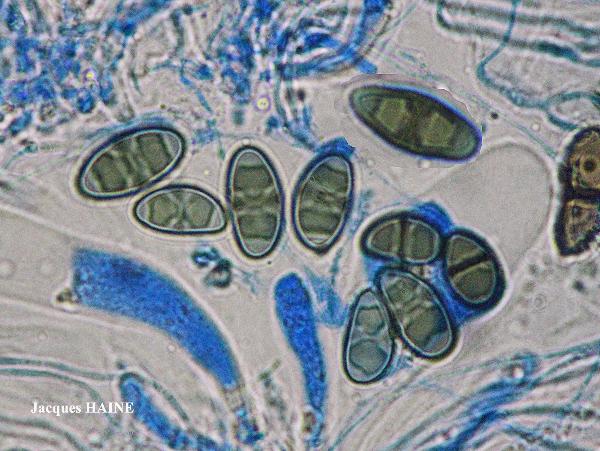
Jacques Haine - Source: http://www.lichensmaritimes.org/index.php?task=fiche&lichen=1453&lang=en
France, Corse, Corbara
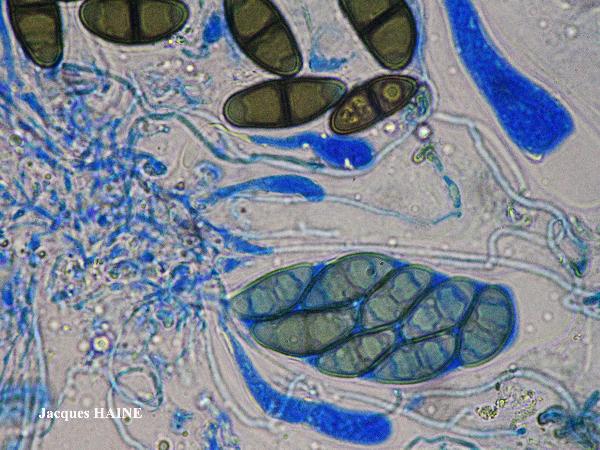
Jacques Haine - Source: http://www.lichensmaritimes.org/index.php?task=fiche&lichen=1453&lang=en
France, Corse, Corbara

Jacques Haine - Source: http://www.lichensmaritimes.org/index.php?task=fiche&lichen=1453&lang=en
France, Corse, Corbara
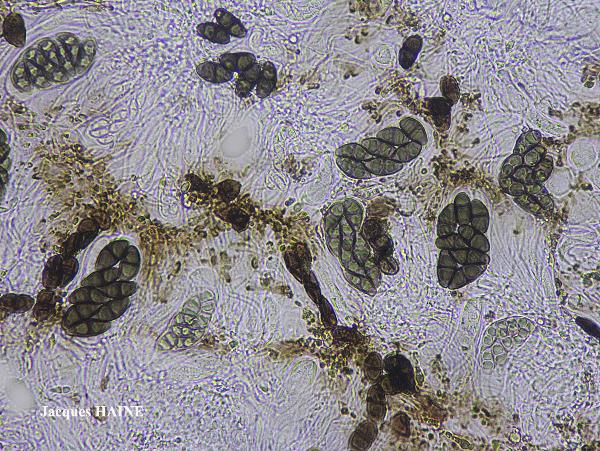
Jacques Haine - Source: http://www.lichensmaritimes.org/index.php?task=fiche&lichen=1453&lang=en
France, Corse, Corbara

Jacques Haine - Source: http://www.lichensmaritimes.org/index.php?task=fiche&lichen=1453&lang=en
France, Corse, Corbara

Manuel Gil
Spain, Canary Islands, Tenerife
Corticícola, en corteza de Erica canariensis
Talo K+ amarillo

Manuel Gil
Spain, Canary Islands, Tenerife
Corticícola, en corteza de Erica canariensis
Talo K+ amarillo

Manuel Gil
Spain, Canary Islands, Tenerife
Corticícola, en corteza de Erica canariensis
Talo K+ amarillo
Growth form: Crustose
Substrata: bark and lignum
Photobiont: green algae other than Trentepohlia
Reproductive strategy: mainly sexual
Pioneer species
Commonnes-rarity: (info)
Alpine belt: absent
Subalpine belt: rather common
Oromediterranean belt: absent
Montane belt: rather common
Submediterranean belt: extremely rare
Padanian area: absent
Humid submediterranean belt: absent
Humid mediterranean belt: absent
Dry mediterranean belt: absent

Predictive model
| Herbarium samples |


P.L. Nimis; Owner: Department of Life Sciences, University of Trieste
Herbarium: TSB (17379)
2001/11/29

Courtesy Danièle et Olivier Gonnet - Source: https://www.afl-lichenologie.fr/Photos_AFL/Photos_AFL_R/Textes_R/Rinodina_capensis.htm
France, 10/10/2014 - Site de Mucchiatana, alt. 5 m - Corse

Courtesy Danièle et Olivier Gonnet - Source: https://www.afl-lichenologie.fr/Photos_AFL/Photos_AFL_R/Textes_R/Rinodina_capensis.htm
France, 10/10/2014 - Site de Mucchiatana, alt. 5 m - Corse

Courtesy Danièle et Olivier Gonnet - Source: https://www.afl-lichenologie.fr/Photos_AFL/Photos_AFL_R/Textes_R/Rinodina_capensis.htm
France, 10/10/2014 - Site de Mucchiatana, alt. 5 m - Corse

Jacques Haine - Source: http://www.lichensmaritimes.org/index.php?task=fiche&lichen=1453&lang=en
France, Corse, Corbara

Jacques Haine - Source: http://www.lichensmaritimes.org/index.php?task=fiche&lichen=1453&lang=en
France, Corse, Corbara

Jacques Haine - Source: http://www.lichensmaritimes.org/index.php?task=fiche&lichen=1453&lang=en
France, Corse, Corbara

Jacques Haine - Source: http://www.lichensmaritimes.org/index.php?task=fiche&lichen=1453&lang=en
France, Corse, Corbara

Jacques Haine - Source: http://www.lichensmaritimes.org/index.php?task=fiche&lichen=1453&lang=en
France, Corse, Corbara

Jacques Haine - Source: http://www.lichensmaritimes.org/index.php?task=fiche&lichen=1453&lang=en
France, Corse, Corbara

Jacques Haine - Source: http://www.lichensmaritimes.org/index.php?task=fiche&lichen=1453&lang=en
France, Corse, Corbara

Jacques Haine - Source: http://www.lichensmaritimes.org/index.php?task=fiche&lichen=1453&lang=en
France, Corse, Corbara

Manuel Gil
Spain, Canary Islands, Tenerife
Corticícola, en corteza de Erica canariensis
Talo K+ amarillo

Manuel Gil
Spain, Canary Islands, Tenerife
Corticícola, en corteza de Erica canariensis
Talo K+ amarillo

 INDEX FUNGORUM
INDEX FUNGORUM
 GBIF
GBIF
 DOLICHENS
DOLICHENS
